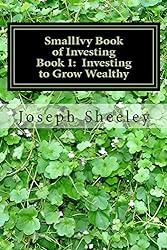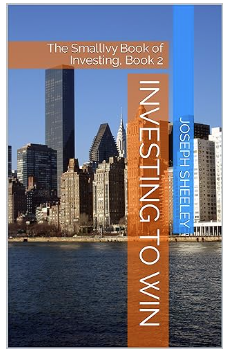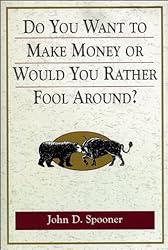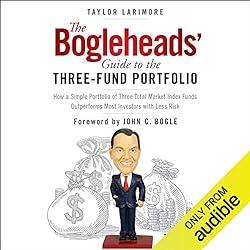
Photo by John Guccione www.advergroup.com on Pexels.com
" data-orig-size="1880,1253" sizes="(max-width: 1880px) 100vw, 1880px" data-image-title="pexels-photo-3531895.jpeg" data-orig-file="https://smallivy.files.wordpress.com/2023/11/pexels-photo-3531895.jpeg" data-image-description="" data-image-meta="{"aperture":"0","credit":"","camera":"","caption":"","created_timestamp":"0","copyright":"","focal_length":"0","iso":"0","shutter_speed":"0","title":"","orientation":"0"}" width="1880" data-medium-file="https://smallivy.files.wordpress.com/2023/11/pexels-photo-3531895.jpeg?w=300" data-permalink="https://smallivy.com/2023/11/24/the-most-basic-way-to-start-investing/pexels-photo-3531895/" alt="" height="1253" srcset="https://smallivy.files.wordpress.com/2023/11/pexels-photo-3531895.jpeg 1880w, https://smallivy.files.wordpress.com/2023/11/pexels-photo-3531895.jpeg?w=150&h;=100 150w, https://smallivy.files.wordpress.com/2023/11/pexels-photo-3531895.jpeg?w=300&h;=200 300w, https://smallivy.files.wordpress.com/2023/11/pexels-photo-3531895.jpeg?w=768&h;=512 768w, https://smallivy.files.wordpress.com/2023/11/pexels-photo-3531895.jpeg?w=1024&h;=682 1024w" class="wp-image-23672" data-large-file="https://smallivy.files.wordpress.com/2023/11/pexels-photo-3531895.jpeg?w=723" />Photo by John Guccione http://www.advergroup.com on Pexels.comThe difference between people who live a life of security and those who struggle with bills is investing. Many more people are investing today than ever before thanks to 401k plans, but that only helps you when you reach retirement age. And that’s assuming that you don’t clean the account out at some point to spend on something else and that you invest reasonably well within the plan.
Having an investment portfolio in a taxable brokerage account that you can access throughout your life is a game changer. It allows you to have the money needed to pay cash for things like cars and home repairs instead of taking out loans. This means that you make interest and capital gains on your money between purchases rather than paying interest like most people are doing. You might also get a discount for paying cash. You’ll have more money over your lifetime than you coworkers. Want to get started investing but aren’t sure how? In this article we’ll discuss the basics of investing so that you can get started.
(Note, this site contains affiliate links. As an Amazon Associate I earn from qualifying purchases. When you click on an affiliate link and buy something, The Small Investor will get a small commission for the referral. You are charged nothing extra for the purchase. This helps keep The Small Investor going and free. I don’t recommend any products I do not fully support. If you would like to help but don’t see anything you need, feel free to visit Amazon through this link and buy whatever you wish. The Small Investor will get a small commission when you do, again at no cost to you.)
For a whole lot more information on investing, check out The SmallIvy Books of Investing series:
This is my first book, which covers all of the details of how to invest and the risks involved in investing in different types of securities. This is the information you need to know before buying individual stocks or even mutual funds. Even more than that, it tells you what you should be doing at each stage of life to come out financially independent before you retire. Click on the book image above to learn more about it and read an exert on Amazon.

Want to learn the secrets to investing and really turbocharge your returns? Check out the second book in The Small Investor series, Investing to Win. This book presents 40 years of investing experience. Someone starting with zero knowledge of investing and the stock market could take this book and learn all that they needed to invest and do well. It would also be useful to someone who has invested and traded stocks for a while but who is really not getting the kind of returns desired.

Investing to Win
Opening a brokerage account
The first step will be to open a brokerage account. This is like a bank account, except it allows you to buy and sell securities such as stocks and mutual funds. Typically this account will have some sort of deposit account or money market within it where cash you send in will sit until you invest it. After it is invested, the broker will “hold the assets” for you, meaning they will hold the shares in your account. This makes it easy to buy and sell them as desired. You can also request they send the certificates to you, which you can then keep yourself. This makes no sense unless you know you’re going to keep the shares for a very long time, and these should be kept in a safe deposit box if you do this since they are difficult (but not impossible) to replace.
The brokerage will also keep track of what you paid for shares (called your “cost basis”) and what you make or lose when you buy or sell. It is smart to also keep your own records of these things, including copies of the sales slips they send you when you buy or sell (or screen captures/pdfs of these if they are electronic), since your broker may have wrong information or lose the information. This is rare, but does happen. (The reason you keep it is that you’ll need the info for filing your taxes and need records in case you are ever audited by the IRS.)
Opening a brokerage account is fairly simple and can typically be done with fifteen to thirty minutes through their website. Just go to their website, select “open an account,” and fill in info like your address, Social Security number, and so on. You can also call if you have questions or need more help.
Once you have the account open. you’ll need to fund the account, which means sending in money so that you can buy stocks/funds/etc…. This can be done by sending a check, doing an electronic funds transfer, swinging by a branch and handing over a wad of cash, etc…. You’ll want to be investing in either mutual funds or individual stocks. Mutual funds will typically have a minimum amount that can be invested (usually $3000 to $5000), where individual stocks sell by the share, but there may be a minimum fee that you need to pay to the brokerage when you buy or sell shares, so you’ll still want to invest a few thousand to start to keep your fee costs down. In general, targeting buys in 100 share increments is a good rule, so finding stocks that cost in the $10-30 range and saving up $1000-$3000 before you buy works well.
Once you have made the initial purchase, you may be able to send in lower amounts to add. Some companies will also let you start with less if you do an auto-draft from your bank account. The rules for minimums and fees are available at the brokerage’s website or call and ask.

Learn to be a better investor by reading J.D. Spooner’s Do You Want to Make Money or Would You Rather Fool Around? This book made me realize that I wasn’t buying enough shares in the companies I was investing in, meaning my wins were no where near as big as they should have been.
Selections for your first investment
A good first selection for most people is a large-cap US stock index fund. Examples of this are the Q’s (symbol QQQ), the “diamonds,” (symbol DIA), and the “Spiders,” (symbol SPY). Within Vanguard, the VOO fund is basically identical to the Spiders since both invest to track the behavior of the S&P 500 index, a set of large US stocks.
So what exactly is a “large-cap US stock index fund?”
Large-cap means large stocks, companies that are worth many billions of dollars and therefore not likely to go bankrupt should we see a recession.
US means these are companies based in America, United States companies. (These will almost always be multi-nationals, where they get their income from all over the world, but will have their headquarters in the US.)
Stock means they invest in the stock of these companies and therefore you become a part owner of the companies, as opposed to buying bonds and just making loans to the companies.
Index means that the manager of the fund just buys whatever stocks are in an index and basically just tries to get the returns of the average company in that area of the markets rather than trying to pick stocks and beat the markets. This keeps costs down which generally results in index funds beating fully managed funds when fees are subtracted.
And a fund is a mutual fund, where investors pool their money together and have a professional manager invest for them.
This is a good type of fund to use for your first investment since it spreads your money out over a large number of fairly stable companies. It is totally possible for you to see 30% losses in any given year, but if held for long periods of time, such a fund should provide average returns of around 10%. Losses are normally wiped out within a few years of when they occur, even faster if you keep investing while the fund is down and lower the average price you paid per share.
.

Want diversification without a lot of work? Check out The Bogleheads’ Guide to the Three Fund Portfolio. Learn to build a diversified portfolio of index funds with just three funds.
ETFs and Index Funds
OK, the funds mentioned above aren’t actually index funds, but ETFs. ETF stands for “exchange traded fund.” These are a special type of mutual fund where the manager buys a portfolio of stocks and then investors trade shares, representing ownership stakes in the portfolio. This can be better than a traditional mutual fund where investors send money into the manager who then buys stocks directly since that can drive up costs when a lot of people are adding or taking away money since the manager then needs to go out and buy and sell shares for the portfolio.
When people are selling ownership shares in the portfolio among themselves, their trades have no effect on the portfolio itself ad don’t drive up costs for the funds. When buying or selling ETFs, you would put in an order to buy or sell them with your broker just like you would do when buying or selling shares of stock. You actually buy shares on an ETF from someone else, so the price goes up if a lot of people are interested in buying or down if a lot of people are eager to sell.
The wealthiest people read a lot of non-fiction books. Don’t have time to read books because of your long commute? Listen to your books in stead with Audible. Free trial at the link below.

Have a burning investing question you’d like answered? Please send to [email protected] or leave in a comment.
Follow on Twitter to get news about new articles. @SmalllIvy
Disclaimer: This blog is not meant to give financial planning or tax advice. It gives general information on investment strategy, picking stocks, and generally managing money to build wealth. It is not a solicitation to buy or sell stocks or any security. Financial planning advice should be sought from a certified financial planner, which the author is not. Tax advice should be sought from a CPA. All investments involve risk and the reader as urged to consider risks carefully and seek the advice of experts if needed before investing.
